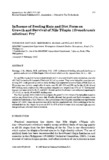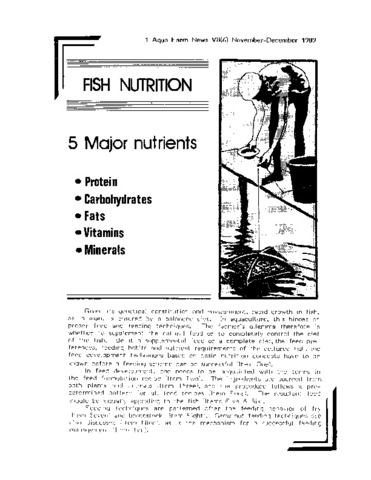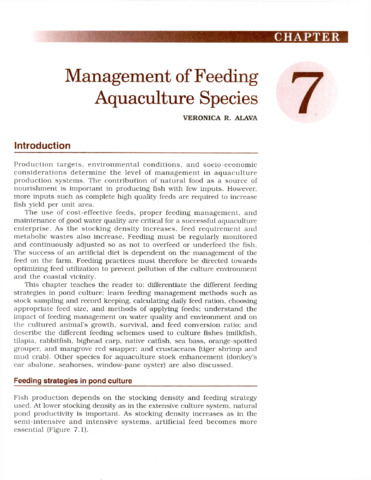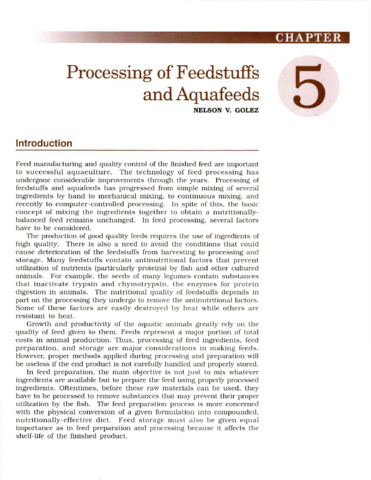Influence of feeding rate and diet form on growth and survival of Nile tilapia (Oreochromis niloticus) fry
Share
စိတ္တဇ
Young Nile tilapia (12 mg mean body weight and 11 mm total length) were stocked at a density of 5 fish/l in twelve 50-l aquaria filled with 30 l of tap water. They were fed pellet crumbles containing 35% crude protein at various daily feeding rates expressed as percentages of fish biomass. Mean increases in body weight after 5 weeks were 63, 198, 232 and 228 mg for the 15, 30, 45 and 60% feeding rates, respectively, when ambient temperature ranged from 19 to 21°C. Corresponding survival rates were 53, 85, 87 and 84%. Growth and survival rates were enhanced significantly (P < 0.01) at the 30, 45 and 60% feeding rates.
Two feeding trials were conducted to compare the growth and survival of fry fed pellet crumbles and an unpelleted form of the same diet. Results showed that growth and feed conversion were similar for both forms of diet. However, the survival rate of fry fed pellet crumbles was significantly higher (P < 0.01) than the survival rate of fry fed the unpelleted diet. Prior pelleting of the formulated diet for the tilapia fry given at 30% to 45% of fish biomass daily ensured high survival, fast growth and efficient feed conversion.
ဖော်ပြချက်
Contribution No. 214 of the SEAFDEC Aquaculture Department.
Suggested Citation
Santiago, C. B., Aldaba, M. B., & Reyes, O. S. (1987). Influence of feeding rate and diet form on growth and survival of Nile tilapia (Oreochromis niloticus) fry. Aquaculture , 64(4), 277-282. https://doi.org/10.1016/0044-8486(87)90190-6
ဘာသာရပ်
စုစည်းမှုများ စုစည်းမှုများ
- AQD Journal Articles [1249]
Related items
Showing items related by title, author, creator and subject.
-
Fish nutrition
Carreon-Lagoc, Julia; Southeast Asian Fisheries Development Center, Aquaculture Department (Aquaculture Department, Southeast Asian Fisheries Development Center, 1989) -
Management of feeding aquaculture species
Alava, Veronica R. (Aquaculture Department, Southeast Asian Fisheries Development Center, 2002)This chapter teaches the reader to: differentiate the different feeding strategies in pond culture; learn feeding management methods such as stock sampling and record keeping, calculating daily feed ration, choosing ... -
Processing of feedstuffs and aquafeeds
Golez, Nelson V. (Aquaculture Department, Southeast Asian Fisheries Development Center, 2002)This chapter will help the reader understand and appreciate the basic principles of processing, preparation, storage, and quality control in the preparation of aquafeeds. The material in this section is presented in sequence ...




